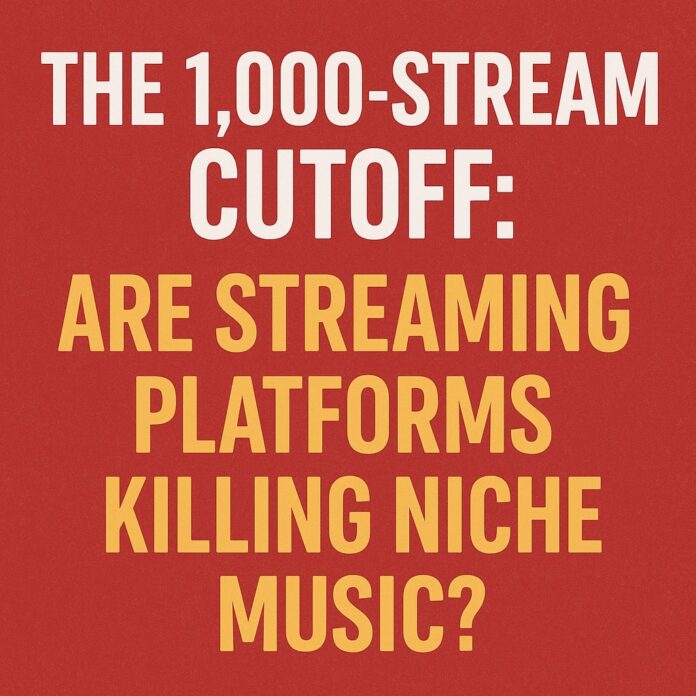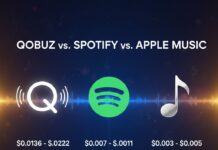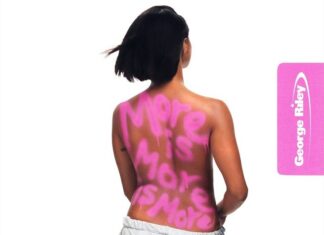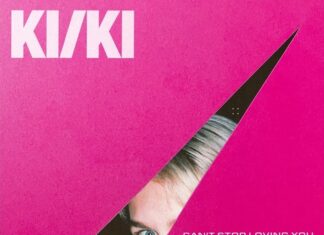
The 1,000-Stream Cutoff: Are Streaming Platforms Killing Niche Music?
Introduction: A New Era of Streaming Economics
In 2025, the global music streaming landscape underwent one of its most controversial changes yet — the introduction of the “1,000-stream cutoff.” This new two-tier licensing model has reshaped how royalties are distributed across the industry.
While the model was designed to combat fraudulent streaming activity and eliminate low-value content such as white noise loops and AI-generated filler tracks, it has also redefined the economics of creativity—particularly for independent and niche artists who rely on smaller but loyal audiences.
Understanding the Two-Tier Licensing Model
Under the new two-tier system, tracks that fail to reach 1,000 streams within a payout cycle are excluded from the core revenue pool.
Instead of every stream contributing to the total royalty calculation, only songs above the threshold are counted toward revenue distribution. In practical terms, this means:
- Tracks under 1,000 streams receive no payout.
- Revenue is redistributed to higher-performing artists and tracks.
- Platforms reduce transaction costs associated with low-earning tracks.
On paper, this approach is meant to streamline payments, minimize fraud, and reward genuine popularity. But in reality, it’s creating a massive divide between mainstream and independent creators.
The Fallout: Independent Artists Left Behind
For many musicians, 1,000 streams might not sound like much—but for niche genres, experimental composers, or local acts, this threshold represents a serious barrier to entry.
Previously, even modest streaming numbers provided micro-payouts that, while small, added up over time. Now, those artists are completely excluded from the revenue pool, effectively making their presence on major streaming platforms a zero-sum game.
“We’ve gone from earning pennies to earning nothing. It’s not about greed—it’s about being recognized for contributing to the cultural ecosystem.”
A New Class of “Unfunded” Musicians
The long-term implication is the rise of a new class of music participants—artists whose work is available to stream but no longer financially supported by the system.
This class includes:
- Emerging artists still building an audience.
- Niche genres such as ambient, experimental jazz, and regional folk.
- DIY creators without label backing or marketing budgets.
These creators now face a fundamental dilemma: visibility without viability. Their art can be heard, but it’s no longer part of the financial conversation.
Labels and Marketing: A Shift Toward the “Sure Thing”
Record labels and distributors are also adjusting their strategies. Since only high-volume tracks qualify for payouts, marketing budgets are increasingly concentrated on artists and releases that show early signs of mass appeal.
This trend discourages creative risk-taking. Instead of nurturing emerging voices, labels are prioritizing quick-return projects—further narrowing the diversity of what listeners discover through algorithms and editorial playlists.
The Cultural Cost of the 1,000-Stream Policy
Beyond the financial implications, the cultural impact of this shift is profound. By aligning success purely with volume, streaming platforms risk erasing diversity and nuance from the global music ecosystem.
Niche and experimental music often serve as incubators for innovation, influencing mainstream genres in subtle but vital ways. If these spaces dry up, the industry loses not just income for creators—but its creative depth.
Alternatives and Advocacy: What Can Be Done?
As the debate intensifies, several advocacy groups and indie collectives are proposing alternative payout structures, such as:
- User-centric payment models, where each listener’s subscription is divided among the specific artists they stream.
- Micro-royalty programs funded by platform margins, ensuring even low-stream tracks receive minimal compensation.
- Hybrid models combining traditional revenue pools with fairness incentives for emerging artists.
These ideas aim to restore equity without enabling abuse, but widespread adoption remains uncertain.
Conclusion: The Cost of Convenience
The 1,000-stream cutoff may have been born out of practicality, but its unintended consequence is clear: a music economy that increasingly rewards reach over resonance.
For listeners, it’s a reminder to support artists directly—through Bandcamp, Patreon, or live shows. For platforms, it’s an urgent call to reconsider whether the pursuit of efficiency is worth the cultural price.
In the end, the question isn’t just “Who gets paid?”
It’s “Whose voices get to survive?”






















 🔥 Limited Time: Get 55% OFF All Plans - Ends in:
🔥 Limited Time: Get 55% OFF All Plans - Ends in: